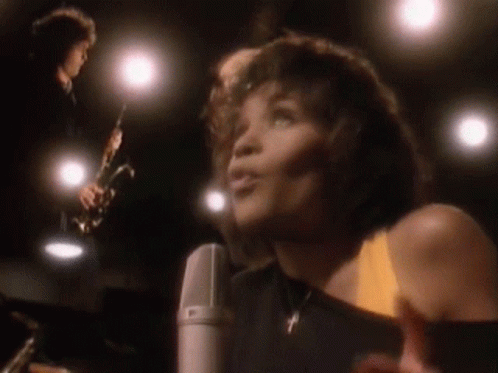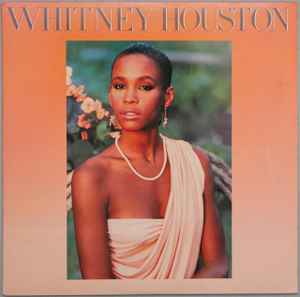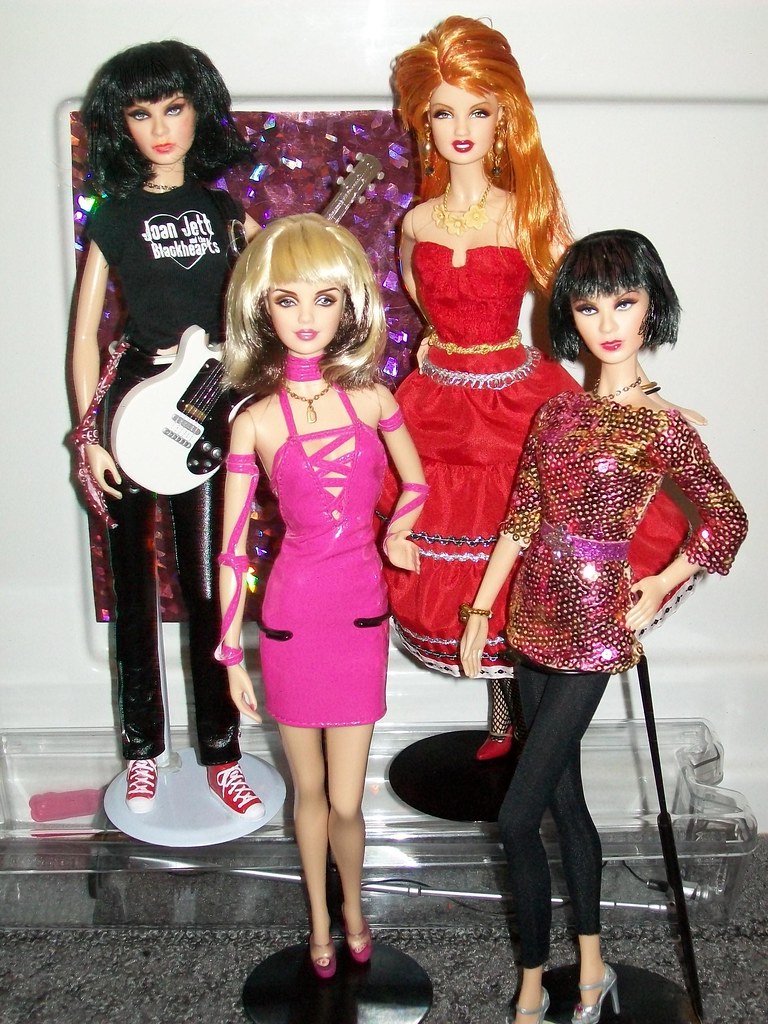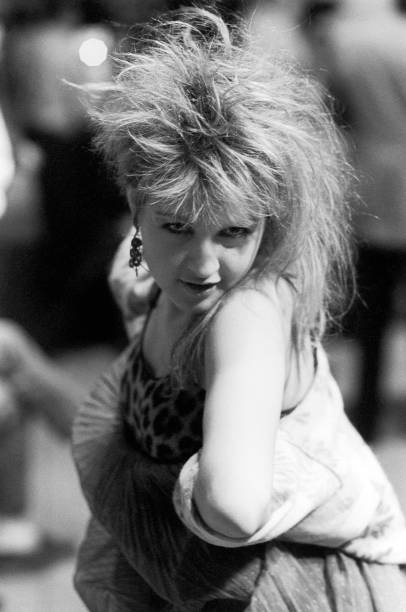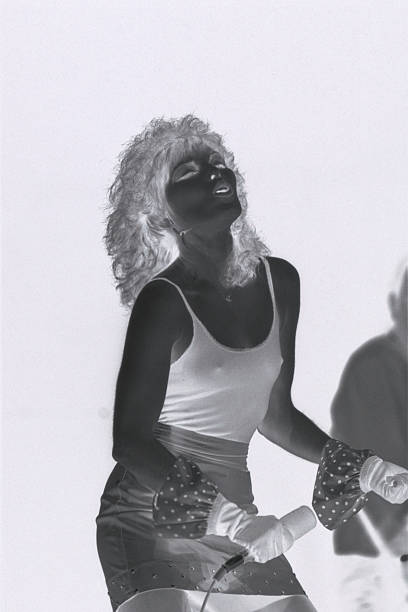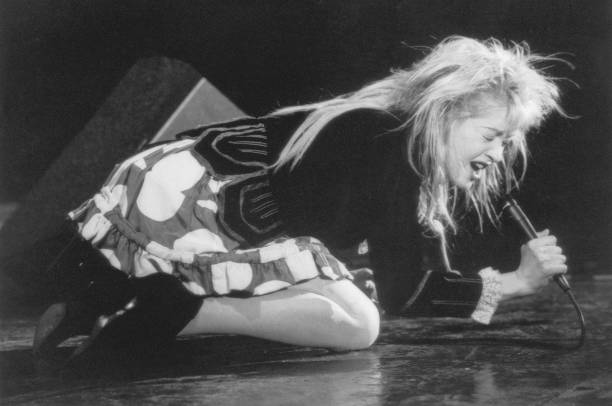Madonna, Pat Benatar & Cyndi Lauper : '80s Influencers'
Apr 29, 2023 21:54:05 GMT
politicidal1 and onethreetwo (he/him) like this
Post by petrolino on Apr 29, 2023 21:54:05 GMT
Madonna Louise Ciccone
(August 16, 1958, Bay City, Michigan, U.S.)

Madonna Louise Ciccone was born on August 16, 1958 in Bay City, Michigan. She ventured to New York in 1978 to pursue a career as a dancer. She played drums in the band Breakfast Club and was also a member of the group Emmy.

Madonna became a staple of the New York arts scene and was an intrinsic part of the "no wave" art movement. This resulted in her being cast by Stephen Jon Lewicki in his film 'A Certain Sacrifice' (1979) and Susan Seidelman in her film 'Desperately Seeking Susan' (1985), several years aprt. Rock 'n' roll band Sonic Youth formed from the ashes of the Coachmen and CKM in New York City in 1981; they later transformed into Ciccone Youth to record 'The Whitey Album' (1989) which includes the songs 'Burn It Up' and 'Into The Groove(y)'. Madonna has worked with other key filmmakers who were active on the New York arts scene including Paul Auster, Abel Ferrara, Spike Lee and Alexandre Rockwell. She's also played some "no wave" style guitar solos out on tour.
10 Essential Movies

01) 'Desperately Seeking Susan' (1985) - Susan Seidelman
02) 'Vision Quest' (1985) - Harold Becker
03) 'Who's That Girl' (1987) - James Foley
04) 'Dick Tracy' (1990) - Warren Beatty
05) 'Shadows And Fog' (1991) - Woody Allen
06) 'Body Of Evidence' (1993) - Uli Edel
07) 'Dangerous Game' (1993) - Abel Ferrara
08) 'Four Rooms' (1994) - Allison Anders, Alexandre Rockwell, Robert Rodriguez & Quentin Tarantino
09) 'Blue In The Face' (1995) - Paul Auster & Wayne Wang
10) 'Girl 6' (1996) - Spike Lee
Madonna has sold more than 300 million records worldwide, making her one of the most successful recording artists of all time. Billboard lists Madonna as the most successful solo artist in its Hot 100 chart history and she's broken records as a touring artist in terms of revenue. In additon to music and dance, she's a successful model and fashion designer who's operated health venues and managed an intermittent acting career in film and theatre. The historic publication of her erotica set 'Sex' (1992) inspired Dan Golden & Linnea Quigley's landmark horror collection 'Skin' (1995) released three years later.
Inducted into the Rock and Roll Hall of Fame in her first year of eligibility, Madonna is a musical icon known as the 'Queen of Pop'!
- - - - - -
6 Essential Studio Albums

-
01] 'Madonna' (1983) - Madonna

"Madonna came to New York in the late 70s from Rochester, Michigan. Initially she was to be a dancer, studying under the tutelage of Pearl Lang, "New York's Martha Graham". Her new instructor had got Madonna a coat check job at The Russian Tea Rooms (across the pond, fellow 80s icon-to-be Boy George was doing the same at Blitz). Dance provided Madonna with a sense of discipline and expression, and back in Michigan, her original teacher/mentor Christopher Flynn had taken her to her first gay club. It showed her "another side of life", and both the gay subculture and club-life would prove vital to her later success.
Music soon replaced dance and she quit Lang's classes. She met two brothers, Dan and Ed Gilroy, and became the drummer in their band, the Ska/Two Tone-influenced, The Breakfast Club. She moved into a disused synagogue in Queens with then boyfriend Dan, who showed her the open E tuning on a guitar. She began song-writing and grew increasingly eager to move away from the drum kit to head centre stage. During the next couple of years, she underwent a fitful pre-fame apprenticeship, a little like Bowie's 60s in London - indeed, Ziggy Stardust had been a favourite of the teenage Madonna. Any avenue was explored in pursuit of the big time.
Ciccone went to Paris as a back-up dancer for Patrick Hernandez. There were movie roles, among them the pseudo-arthouse skin flick A Certain Sacrifice and Artificial Light. The latter saw her 'rapping' a la Blondie's 'Rapture'. The dialogue laid her world-view bare: "I'll do anything for money", an early glimpse of the future Material Girl devoid of all vestige of irony.
Soon, Madonna became a permanent fixture at the city's Midtown Music Building, fronting the band, Emmy (her nickname), penning Pretenders-style songs ('Laugh To Keep Myself From Crying') with former Michigan beau, Steve Bray. Before long she caught the attention of Camille Barbone, of Gotham Management, who swiftly sacked her band (Bray was retained) and began grooming her for pop stardom. The results were a mish-mash of then popular female singers.
Her look was a Pat Benatar/Olivia Newton John clone, while songs like 'I Want You' were catchy but unremarkable. What Madonna did learn from this period was how to hone a hook from a variety of styles, a versatility that would serve her well. The lyrics from one Barbone-era song, 'Get Up' evidenced a relentless tenacity and a desire to win at all costs. Not the most gifted singer or musician, she nevertheless possessed astounding drive.
More exciting things were happening away from Barbone's manufactured vision. At the time, New York's fertile club scene thrived on cross-cultural exchange. The worlds of art, fashion & music all collided at places like Danceteria, The Roxy and The Mudd Club. Everything was up for grabs, as disco, punk & hip-hop all merged. Graffiti, the new street pop art, embodied the spirit of the age: DIY, breaking down the barriers between high and low. The downtown elite fraternised with young artists from Harlem and The Bronx. The city's credo, for a time, was a Warhol/Sly Stone amalgam: "Everybody is a star."
- Matthew Lindsay, The Quietus
"Sire Records founder Seymour Stein was lying in a hospital bed the first time he heard Madonna. It was 1982, and the man who’d signed the Ramones, Talking Heads, and the Pretenders had one of his usual heart infections. Listening to his Walkman, Stein perked up when he heard a bass-heavy demo of Madonna’s first single, “Everybody.” He called the DJ who’d given him the tape, Mark Kamins of New York’s anti-Studio 54 utopia Danceteria, and asked to meet Madonna, a Danceteria regular and waitress. Hours later, the 24-year-old dancer-turned-musician from Bay City, Mich. was in that hospital room, hoping Stein was well enough to draw up a contract.
Stein did sign her, and the following year put out Madonna, a cool and cohesive debut that helped resituate electronic dance-pop at Top 40’s apex with hits like “Holiday,” “Lucky Star,” and “Borderline.” But the suits at Warner Bros., which had acquired Sire a few years earlier, didn’t quite know what to do with the former punk who was writing and performing muscular R&B for the club. Their early inclination was to work her at black radio stations, favoring a cartoonish urban collage for the “Everybody” cover instead of Madonna’s already perfected thousand-yard stare. Listeners weren’t sure what to make of the singer cooing those pleading vocals on the rising dance hit, but it wouldn’t be long before Madonna did something about that too."
- Jillian Mapes, Pitchfork
02] 'Like A Virgin' (1984) - Madonna
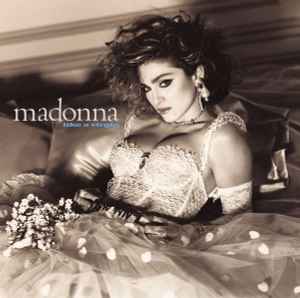
"On her self-titled 1983 debut, Madonna sang perky little tunes about going on vacation (“Holiday”) and falling in and out of love (“Lucky Star” and “Borderline”). These were ideas grandma and grandpa could get behind, and yet the 20-something Michigan native caused a minor sensation, setting the stage for a total pop-culture takeover. Clearly, music was only one of her weapons.
While Madonna offered Middle American mallrats a taste of underground NYC dance culture, what really got people talking was the singer herself. This spunky, self-assured club kid with the belly shirts and rubber bracelets liked being a topic of conversation, and with her second album, Like a Virgin, she endeavored to keep her name on everyone’s lips.
Released 30 years ago today (Nov. 12, 1984), Like a Virgin is sometimes thought of as Madonna’s artistic coming-out party, the moment she swapped frivolous bubblegum for more thoughtful examinations of female sexuality. Such praise stems mostly from what we now know about Madonna. However, for all its merits -- and it has many -- Like a Virgin isn’t exactly The Feminine Mystique set to music. In fact, it’s not all that different from its predecessor.
As with her first record, Madonna went into Like a Virgin wrestling Warner Bros. for more artistic control. After her negative experiences working with Reggie Lucas, she wanted to handle more of the production herself, and she found a winning collaborator in Chic guitarist Nile Rodgers, who’d just worked on David Bowie’s Let’s Dance.
Rodgers gave Madonna’s music some extra snap and sheen, and if he didn’t quite hand the singer her first classic album -- she’d have to wait another five years for that -- he did get her to the top of the Billboard 200. He also helped craft two of the decade’s most iconic singles."
- Kenneth Partridge, Billboard
"Madonna had hits with her first album, even reaching the Top Ten twice with "Borderline" and "Lucky Star," but she didn't become a superstar, an icon, until her second album, Like a Virgin. She saw the opening for this kind of explosion and seized it, bringing in former Chic guitarist Nile Rodgers in as a producer, to help her expand her sound, and then carefully constructed her image as an ironic, ferociously sexy Boy Toy; the Steven Meisel-shot cover, capturing her as a buxom bride with a Boy Toy belt buckle on the front, and dressing after a night of passion, was as key to her reinvention as the music itself. Yet, there's no discounting the best songs on the record, the moments when her grand concepts are married to music that transcends the mere classification of dance-pop. These, of course, are "Material Girl" and "Like a Virgin," the two songs that made her an icon, and the two songs that remain definitive statements. They overshadow the rest of the record, not just because they are a perfect match of theme and sound, but because the rest of the album vacillates wildly in terms of quality. The other two singles, "Angel" and "Dress You Up," are excellent standard-issue dance-pop, and there are other moments that work well ("Over and Over," "Stay," the earnest cover of Rose Royce's "Love Don't Live Here"), but overall, it adds up to less than the sum of its parts -- partially because the singles are so good, but also because on the first album, she stunned with style and a certain joy. Here, the calculation is apparent, and while that's part of Madonna's essence -- even something that makes her fun -- it throws the record's balance off a little too much for it to be consistent, even if it justifiably made her a star."
- Stephen Thomas Erlewine, AllMusic
03] 'True Blue' (1986) - Madonna

"With five extremely varied hit singles, Madonna’s third album, True Blue, was a supreme archetype of ‘80s pop music. With songs like “Papa Don’t Preach,” Madonna made the transition from pop tart to consummate artist, joining the ranks of the decade’s icons like Michael Jackson and Prince. The songs were undeniably more mature than fare like “Material Girl,” dashing some critics’ assertions that she was just another flash in the pan."
- Sal Cinquemani, Slant
"The 1980s gave birth to a long list of Pop legends, and on June 30th of 1986, Madonna released her third studio album, True Blue. Already a star in her own right, True Blue was released at a time when Madonna was poised on the cusp of mega-stardom; in fact, before long, she would become known as the “Queen of Pop.” An immediate success across the globe, True Blue reached number one in 28 countries – including, of course, the United States – and it spent 34 consecutive weeks at the top of the European Top 100 Albums chart, longer than any other album in history.
True Blue would go on to be the world’s top-selling album of 1986, as well as the best-selling album of the 1980s by a female artist. With estimated sales of over 25 million copies worldwide, True Blue remains one of the best-selling albums of all time; and all five singles released from the album reached the Top Five on the Billboard Hot 100 Chart. If this was not enough, “Live to Tell,” “Papa Don’t Preach,” and “Open Your Heart” all went on to hit No. 1 on the Billboard charts.
Madonna – born Madonna Louise Ciccone – co-wrote and co-produced the entirety of the album along with Stephen Bray – who had worked on her previous album, Like a Virgin– and Patrick Leonard. Inspired by her relationship with then-husband, Actor Sean Penn – to whom the album is dedicated – the album spoke of relationships, secrets, lies, bad boys, escaping to a beautiful island paradise, dance parties, and the pains of youth. This was one of Madonna’s most personal albums to date, and would become the hallmark for all future works by this self-proclaimed “Material Girl.” True Blue was not just a bubbly hit song about young love, it was an album about a woman coming into her own, musically."
- Jeannie Blue, Cryptic Rock
04] 'Like A Prayer' (1989) - Madonna
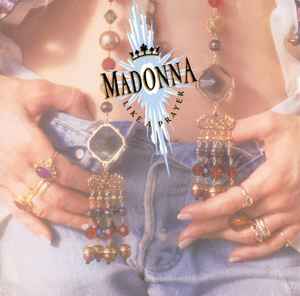

"Madonna was already a superstar before she released Like a Prayer. She had produced at least half-a-dozen era-defining hits (“Holiday,” “Like a Virgin,” “Material Girl,” “Into the Groove,” “Papa Don’t Preach,” and “La Isla Bonita”), and her previous album, 1986’s True Blue, had sold more than 25 million copies. But, in a way, she was also strangely underrated. When Like a Prayer came out in 1989, six years after she hit the ground running with her infectious debut single, “Everybody,” critics lauded Madonna for changing our conceptions around how a female pop singer could present herself and conduct her career. But they didn’t necessarily regard her as a “great artist.”
"Critics flock to her uneven product the way liberal arts magnas flock to investment banking," Robert Christgau, the self-styled “Dean of American Rock Critics,” wrote in his review of True Blue. "So desperate are they to connect to a zeitgeist that has nothing to do with them that they decide a little glamour and the right numbers add up to meaningful work, or at least 'fun.’”
Like a Prayer certainly confirmed Madonna’s flair for fun; with its kindergarten-friendly lyrics about “pink elephants and lemonade” and treacle-sweet, Beatles-y psychedelia, “Dear Jessie” remains one of her most charming singles. But the album as a whole, Madonna’s first undisputed masterpiece, also proved once and for all that she was a meaningful artist, not just an uncommonly savvy and driven pop star. She bared her navel on the album’s cover, and her soul in its songs."
- Nick Levine, VICE
"For the record, my nearly favourite album is Discovery by Daft Punk. But after sending my 15th email in one hour debating the merits between that one and this one to the beleaguered editor of this website (oddly, he stopped replying after my seventh email), I caught my reflection in the mirror, hairbrush in front of mouth, and thought, who am I kidding? I'm a woman in her 30s – of course my favourite album is Like a Prayer. Bog off, era-defining dance music auteurs and crank up Cherish.
Any woman my age who claims to have no emotional connection to Like a Prayer is a liar, not my age and quite possibly not a woman. And unlike too many albums to which women are supposed to have emotional connections, this one isn't mopey, self-indulgent, difficult or weird: Like a Prayer is a joyous reminder of just how fun Madonna really did used to be. I was 10 when this album came out and while it wasn't my first modern pop album (that accolade went to the still relevant … Tiffany), it was the one that shaped what I thought, and still think, pop stars, pop music, music videos, love, sex and the 80s were and should be.
It's hard to think of an album cover more evocative of women in the 80s than Like a Prayer, with its juxtaposition of jewels, religious iconography, a bare tummy and high waisted pale denim jeans. This is the ladies' answer to Bruce Springsteen's Born in the USA, replete with denim crotch-area shot. If I'm being totally honest, I still think this is how cool people dress."
- Hadley Freeman, The Guardian
05] 'Erotica' (1992) - Madonna
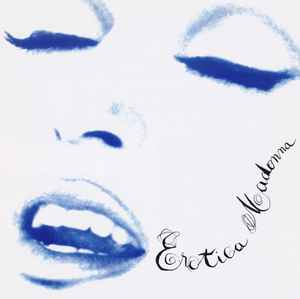
"It took Madonna ten years, but she finally made the record everyone has accused her of making all along. Chilly, deliberate, relentlessly posturing. Erotica is a post-AIDS album about romance — it doesn’t so much evoke sex as provide a fetishistic abstraction of it. She may have intended to rattle America with hot talk about oral gratification and role switching, but sensuality is the last thing on the album’s mind. Moving claustrophobically within the schematic confines of dominance and submission, Erotica plays out its fantasies with astringent aloofness, unhumid and uninviting. The production choices suggest not a celebration of the physical but a critique of commercial representations of sex — whether Paul Verhoeven’s, Bruce Weber’s or Madonna’s — that by definition should not be mistaken for the real thing. It succeeds in a way the innocent post-punk diva of Madonna and the thoughtful songwriter of Like a Prayer could not have imagined. Its cold, remote sound systematically undoes every one of the singer’s intimate promises."
- Arion Berger, Rolling Stone
"Anyone who claims that Madonna’s appeal has only ever been erotic is kidding themselves – she’s so much more interesting than that. Yet from the very start, erotica was certainly a primary element of her appeal. Her voice had a tinge of sexual urgency without ever tipping over into blatantly adult-content. And because anticipation is so much more exciting than release, Madonna’s refusal (mostly) to belt out her pop songs at the top of her lungs, keeping them tightly wrapped in understatement, suggested future pleasures in the bedroom without fully succumbing to them. Just like a virgin touched for the very first time.
But the religion/sex mashup “Like a Prayer” saw a decided turn towards a more provocative exploitation of her sexual starlet image. And hot (very hot) on its heels came “Justify My Love”, in which Madonna limited her vocals even further to the point where she was practically just talking in-tune, making her sound all the more sultry.
Erotica follows on in the manner of the sexual frankness of “Like a Prayer” and the vocal lack of fussiness of “Justify My Love”. The album’s a series of dance tunes, each one on average longer than 5 minutes, that combine to create an aura of erotic indulgence delayed gratification. Somewhat cold and distant, building from the bottom up with its plethora of drum machines and chilly synths, the tunes take a while to sink in; yet Madonna is always there to promise the pleasure will come later. She still wants to take you there, but slowly this time, and you’re damned right at her own pace.
I don’t think she ever sounded as in control as on this album – with the exception, perhaps, of Music. She takes enjoyment from the male objects of her desire, she toys with them, she’s sometimes hurt by them. She realises there’s something a little scary about going “Deeper and Deeper” – in love, if not in sex – but you can rarely hear that tentativeness in her voice. After all, sexual power can never be absolutely complete, because a relationship relies on two people, and that other person can always f*ck it up. Yet Madonna sounds as autonomous, as in control of her pleasures, as it’s possible to be, on a smart album that acknowledges the complexities of sexual relationships between flawed members of the ever-so-flawed species we call the human race."
- Oliver Hollander, From The Record Crate
"David Fincher’s work with Madonna has been all over his filmmaking, their music video collaborations regularly gesturing towards the movies that would make him internationally famous. [...] But it is 'Bad Girl', full of the psychological depth, visual symbolism and pulpy thrills that would dominate much of Fincher’s filmography, that is his unheralded masterpiece."
- Adam White, The Independent
- Adam White, The Independent
06] 'Bedtime Stories' (1994)

"Throughout her extensive career, Madonna (a.k.a. The Queen of Pop) has worn many, quite controversial hats. Whether it be a girly-girl for 1986’s True Blue, a political rebel for 2003’s American Life or a disco goddess for 2005’s Confession On A Dancefloor, the entertainer always knows how to switch up her persona to keep her fans interested and the world guessing what her next move will be. (Well, maybe not with MDNA. I’d like to forget that album.)
But one of the singer’s greatest musical eras was arguably her most subtle. On October 25, 1994, her sixth studio LP Bedtime Stories released worldwide. The album found Madonna easing up on her naughty persona and going for a softer vibe, and today (October 24) we celebrate its timeless sound."
- Bianca Gracie, Idolator
"As professional music critic Sal Cinquemani so aptly put it, Madonna has always excelled at damage control. In the hopes of smoothing over the controversy that followed the Erotica period while at the same time remaining indignantly unapologetic, Madonna was back in the studio in 1994 to record the album that would become her dignified, R&B-flavored “f*ck you” to the critics that had so maliciously turned on her in the previous two years.
Bedtime Stories is notable for being one of the rare instances where Madonna utilized the assistance of established and popular producers of the time – in this instance, Nellee Hooper, Dallas Austin, Dave “Jam” Hall, and Babyface. The album features a R&B dance sound and produced the singles “Secret,” “Human Nature,” “Bedtime Story,” and the notable “Take a Bow,” which would become Madonna’s longest-running Billboard number one single to date.
The title track, “Bedtime Story” – co-written by Björk, is perhaps the most notable of all of the songs on the album as it (along with its tracklist predecessor, “Sanctuary”) marks an extreme departure in sound for Madonna. The song would serve as the sign of what Madonna would go on to do in 1998’s Ray of Light, featuring a swirling trance-like sensibility and metaphysically introspective lyrics.
I think of Bedtime Stories and I immediately think of the word DIGNITY.
Of all Madonna's albums, I think that Bedtime Stories is the most grossly underappreciated by critics and fans. I think that might have something to do with the volatile nature of the R&B genre's sound. We all know that hip hop and urban music is in a constant state of evolution and what is current and fresh now will not necessarily sound as fresh a year from now. Consequently, I think this record suffers from sounding the most "dated" of all Madonna's work, but we must not let that mislead us into thinking that it isn't brilliant, because it undoubtedly is.
There is a warmth and beauty to Bedtime Stories. The maturity, sensuality and DIGNITY in which this album is executed really sets it apart from the bombast and frigidity of the brilliant Erotica."
- Jose Ebus, Rate Your Music



